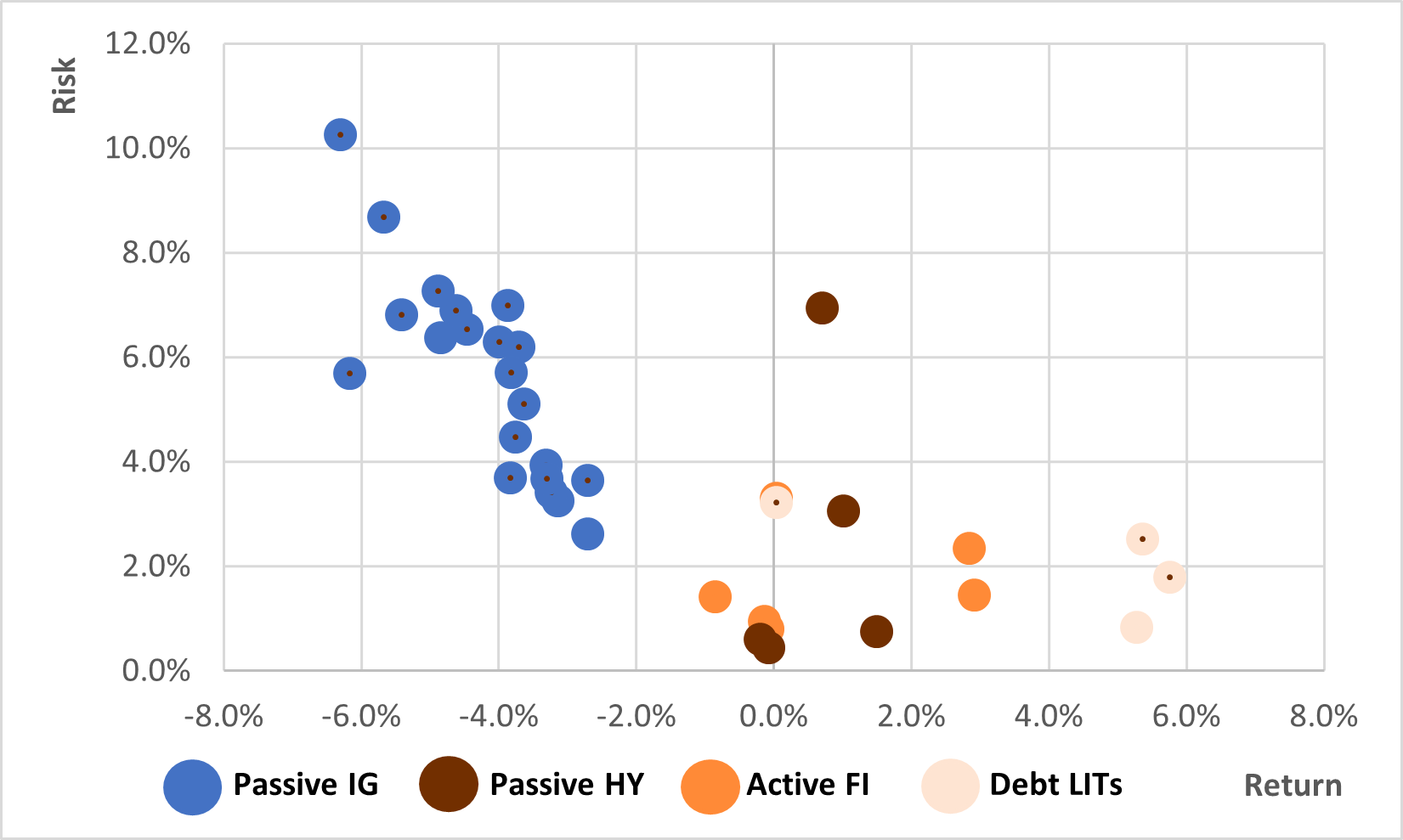The dominance of Active (versus Passive) fixed income – the Australian listed sector

Risk Return Metrics
This is not about the tired old Active versus Passive equities debate. In the world of fixed income (FI), Active versus Passive matters considerably more and in FI, active management has a clear advantage over passive and for various reasons unique to the FI market. This research piece deliberately focuses on the last 12-month period, a period we view as an indicator of inflation rate / interest rate expectations for the foreseeable future.
There are times when the FI markets are really rallying that the beta return component overwhelms the potential alpha component and riding the beta wave via a passive strategy may make sense (2010-2011 was one such period). Now (nor the last year) is not one of those periods. Not with rising inflation, rising interest rates and with mounting economic and market risks. For the foreseeable future, we expect it to be a period where sector and credit selection have heightened importance, i.e. alpha will dominate beta. Only fixed income ETMFs (active ETFs) provide this flexibility.
This article focuses on the ASX-, Chi-X listed FI ETF / ETMF / and publicly listed debt LIT universe. This universe provides a very clear distinction between passive and active FI strategies. It also highlights marked performance differentials over the last 12-month period.
1-year Risk – Return – Listed Fixed Income

Big problems in the passive fixed income ETF sector
The ASX-listed fixed income ETF sector is dominated by very long duration investment grade ETFs that are bound by static indices. They are extremely exposed to rising inflation / rising interest rate risk. This is not a 5-minute-to-midnight risk. This risk has played out over more than the last 12-months, resulting in poor returns and material drawdowns. Bear in mind how these ETFs are marketed – stable income, capital protection, etc. And we have not even mentioned the negative real yields from these ETFs.
The passive investment-grade ETFs are index-tracking and therefore have no levers to pull. There is no ability to change duration, securities/sector selection, fixed versus floating rates, or implement derivative-based downside protection. They are at the whim of the broader fixed income markets, and those markets are now very different to the 10 or so years preceding late 2020 (when bond markets first started to price in inflation concerns).
Drivers of active fixed income outperformance
There are a few reasons that help explain why the active versus passive story for fixed-income is different than for equities, which we list below. And anyone that has spent a reasonable amount of time studying the fixed income would come to understand that outperformance of Active FI strategies makes perfect sense.
- The Information Advantage / Premium of Debt Markets;
- Index Issues;
- Risk Mitigation Advantage;
- Credit Risk Targeting;
- Participation in New Issuance.
Download the PDF to access the full report
Click on the pdf below to access:
- Active versus Passive Fixed Income performance:
- Other key distinctions between Active and Passive mandates;
- Key drivers of Active fixed income outperformance.
1 topic

Investment analyst with particular experience in listed and unlisted investment strategies, equities and structured products.
Expertise

Investment analyst with particular experience in listed and unlisted investment strategies, equities and structured products.
